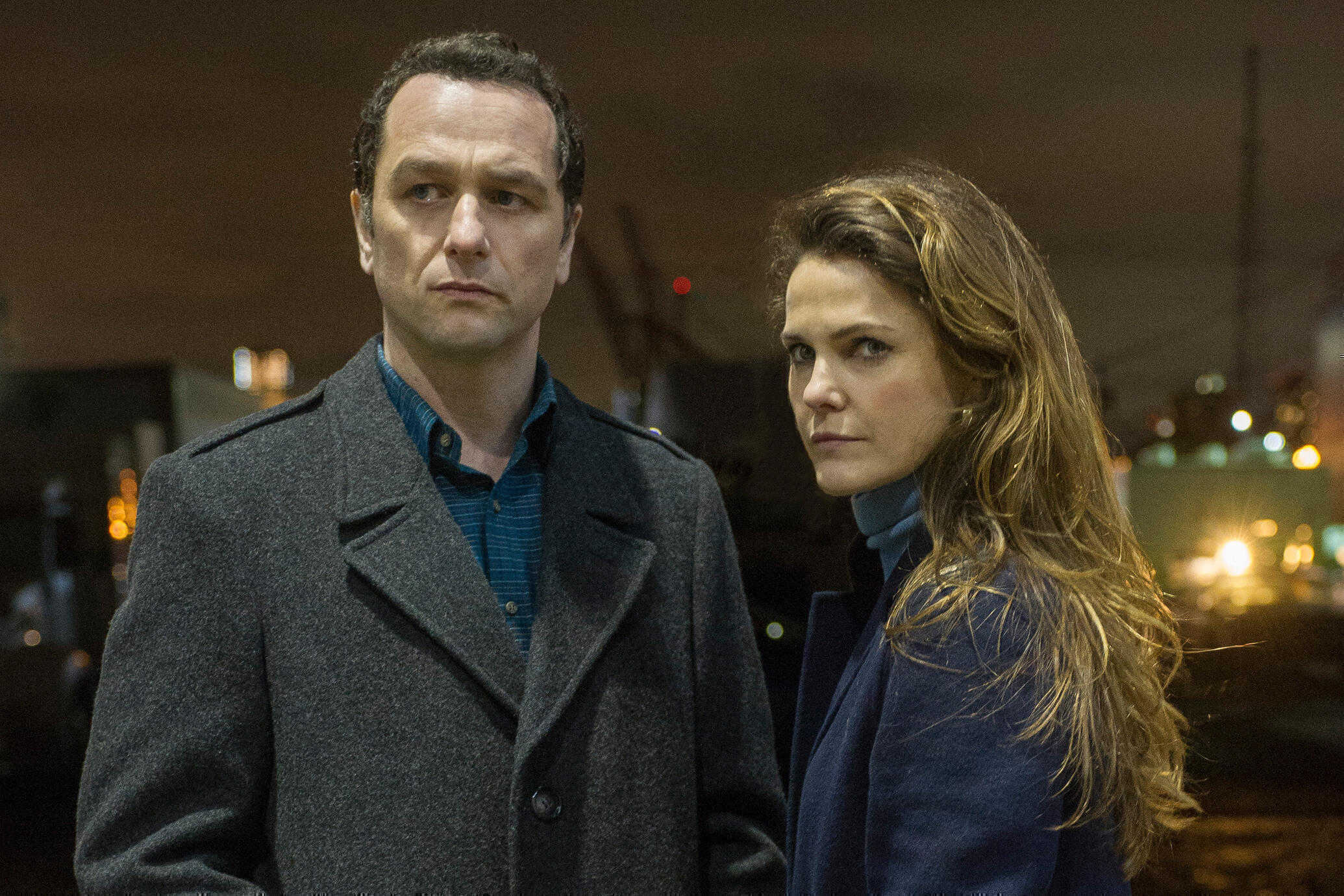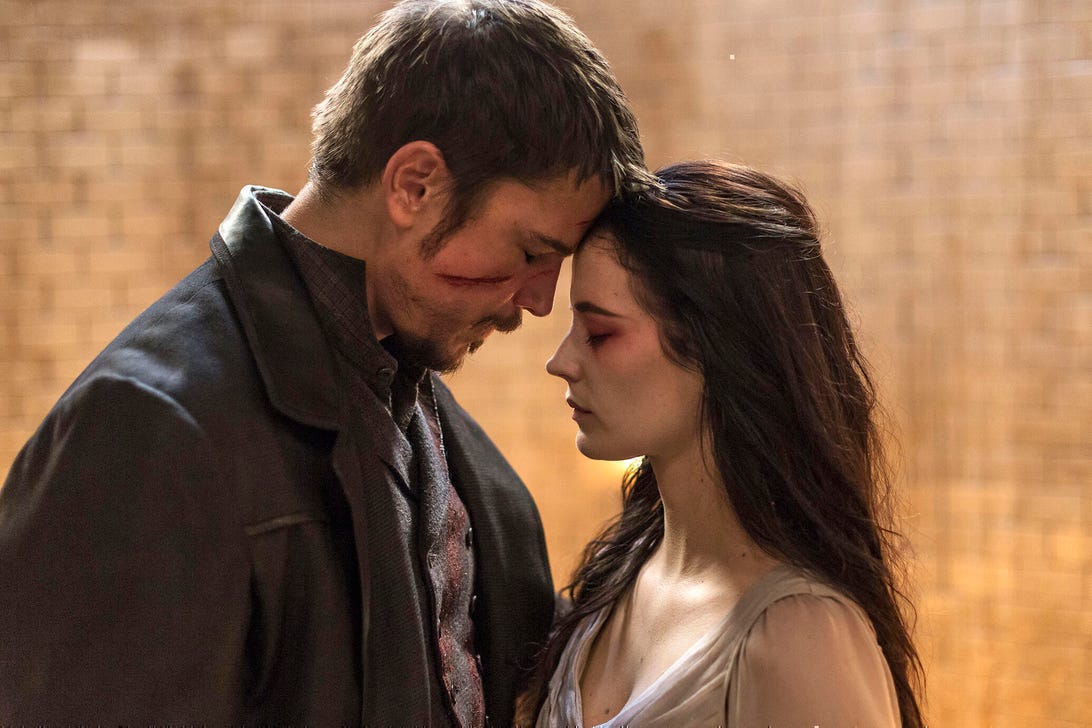
From Performance to Script, 'Penny Dreadful' Was the 2010s Show Most Robbed of Recognition
Eva Green was ferocious in the gone-too-soon horror series
Every week on Penny Dreadful Eva Green climbed out of the TV screen like the girl from The Ring, crawled through the broken glass on her knees, recited a Tennyson poem, burned a corset, and sat down for tea. (I'm taking only the slightest creative liberties here.) Green's performance on the Showtime drama made the word "fearless" feel quaint. She was alternately ferocious and restrained, and she played both with unflinching intensity. Looking back, it's almost impossible to believe that she did all of this with so little recognition -- she should have slept on a bed of trophies -- but the show went mostly unnoticed by major awards and apparently by my coworkers, which cut the legs out from under my very enthusiastic campaign to rank it among the top shows of the decade. My coworkers, like the Emmys, will answer for their crimes. But even if Penny Dreadful lurked too far under the radar to make our final list, the show still left a mark, the kind that burns just under your skin when you least expect it.
Best TV of the Decade: The Shows, Moments, and Trends That Defined the 2010s

It wasn't just Eva Green. As Vanessa Ives, a devout woman tormented by supernatural forces, Green was Penny Dreadful's main attraction, but the gothic drama -- which aired from 2014 to 2016 on Showtime -- was a playground for an imposing cast all around. There was also Billie Piper, tearing into monologues as a woman reborn to be the bride of Frankenstein's monster; Timothy Dalton, a restless British explorer unsatisfied with his conquests; Josh Hartnett, simultaneously a gun-slinging Western movie hero and a werewolf; Helen McCrory, a step-on-me-please witch; and Rory Kinnear, downright Shakespearean as Frankenstein's tragic but vicious first creation. Brian Cox showed up in a couple of episodes as Josh Hartnett's dad, basically the Logan Roy of Manifest Destiny. Meanwhile, Patti LuPone played two roles, guest-starring in Season 2 as a witch banished to the moors for performing abortions and returning for the third season as a straight-shooting alienist from New York.

Eva Green, Penny Dreadful
Jonathan Hession, Jonathan Hession/SHOWTIMEPenny Dreadful was a packed-full show, busy with gore, big personalities, and self-consciously beautiful dialogue (which was beautiful, so the self-consciousness worked). It treated horror like art, styling its most macabre tableaus like tasteful Romantic paintings of severed limbs. The series knew how to entertain; it drew its name from cheap sensationalized books popular in the 19th century and pulled most of its characters from classics like Dracula, Frankenstein, The Picture of Dorian Gray, and Dr. Jekyll and Mr. Hyde. Penny Dreadful could be a bloody bash when it wanted to be.
Laura Dern's Tragically Short-Lived Enlightened Only Gets More Relevant With Time
But it was also dense with ideas, and its best, most aching moments came when it stripped away the frills and exposed its brutal core. Vanessa was institutionalized before the events of the series, partly because she was ostracized for having sex with her best friend's fiancé the night before the wedding and partly because she was possessed by a demon. Everything metaphorical was literal on Penny Dreadful -- but crucially, it was the shame she was made to feel, not the sex itself, that left her vulnerable to possession. At least once a season, Penny Dreadful revisited the events around Vanessa's horrific institutionalization and its aftermath, always delivering a scalding critique of Victorian fear of female sexuality.
Shame bled through the series. Hartnett's Ethan Chandler was an American sharpshooter running from his past sins as a cavalry soldier in the American Indian Wars. His werewolf side was a lens to magnify his guilt; however decent he seemed in the daylight (and Ethan was, in all other ways, a truly decent man), his colonialist violence had made him a monster. Dalton's Sir Malcolm lost his family to his imperialist adventures in Africa. Victor Frankenstein (Harry Treadaway) was haunted by his pride. The Creature (Kinnear), ashamed of his appearance, lurked among the poor and ill people London refused to care for. And Victor's third creation, Lily (Piper), spent Season 3 on a murderous quest for vengeance against men, driven by the memory of the indignities she'd suffered during her life as a prostitute. Lily ultimately decided that violence rang hollow, but her anger was still thrilling; the world was to blame for the pain she'd endured, and she knew it.

Every character's personal shame was a piece of a deeper social problem. Through Penny Dreadful, creator John Logan wrestled with the way society demonizes difference, drawing parallels to his own experience as a gay man. "Grappling with the issue of who I truly was, which some would perceive as monstrous, is exactly why I wrote this series," Logan told the New York Times before the show's premiere in 2014. He recalled walking down New York's Christopher Street, the center of the state's gay rights movement, when he was young: "I realized there was a whole life here, and if I were to cross over into it, it would mark me as very different from my brother and my parents and my friends." The characters of Penny Dreadful walked through the world like that, aware that if they crossed into the underworld of 19th-century London they may be more fully themselves, but there would be no coming back.
Justice for Banshee, the Pulpiest Drama of the Decade That Deserves More Props
In her fight against the idea that she was predestined to plunge the world into darkness, Vanessa clung to her Catholic faith to literally keep the demons at bay. But her battle came to an abrupt end in the third season finale, a surprise series finale that saw an exhausted Vanessa ask Ethan to end her life. Seduced to believe her worst fears about herself, she had allowed Dracula (Christian Camargo) to feed on her, unleashing a plague on London; by dying, she hoped to save her soul and deny the devil his prize, which would also save humanity. Ethan, whose fiery chemistry with Vanessa was cut far too short, killed her with the Lord's Prayer on both of their lips.

Josh Hartnett, Eva Green, Penny Dreadful
Patrick Redmond, Patrick Redmond/SHOWTIMEIt was an ending Logan swore was purely a creative decision. But in addition to rushing the other characters' arcs, watching Vanessa choose death felt like a betrayal of her admirable persistence in the face of impossible odds. The message it sent viewers who identified with her struggle was muddled and disappointing at best. Maybe Penny Dreadful aligned uniqueness with inner demons so much that it didn't know how to untangle them in the end. The show had the tendency to over-admire, as one priest put it to Vanessa in the Season 1 finale, "the glory of suffering" -- in part because it saw suffering as the unavoidable price of being a good person. Still, in the context of Penny Dreadful's very heightened world, I'll admit I was a little charmed by the fact that the real challenge of the series finale was to share Vanessa's faith, or at least understand it. Her salvation was the grace note at the end of her story.
This Decade of Television Owes a Lot to These Late-2000s Shows
Penny Dreadful didn't believe in living too long. Dorian Gray (Reeve Carney) was miserable with his immortality, and the Creature's resurrection was a curse. The prettiest exit on the show went to Ferdinand Lyle (Simon Russell Beale), an Egyptologist who moved to Cairo midway through the final season in search of a country more accepting of his sexuality. He left Vanessa with a memorable sign-off: "Condemn me to the sand and dust, write often, and think of me only when you dance." In a way it was better that Penny Dreadful died too young, as something worth remembering with a dance.
Penny Dreadful is streaming on Netflix.
